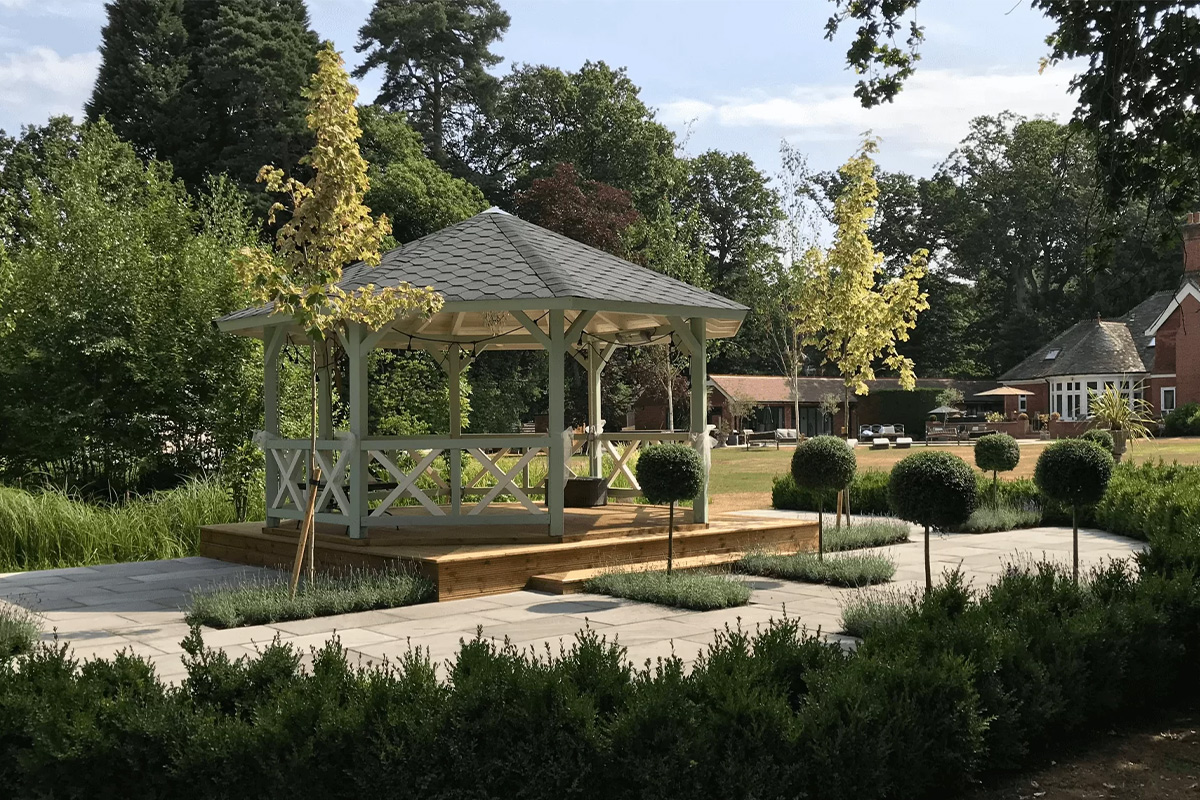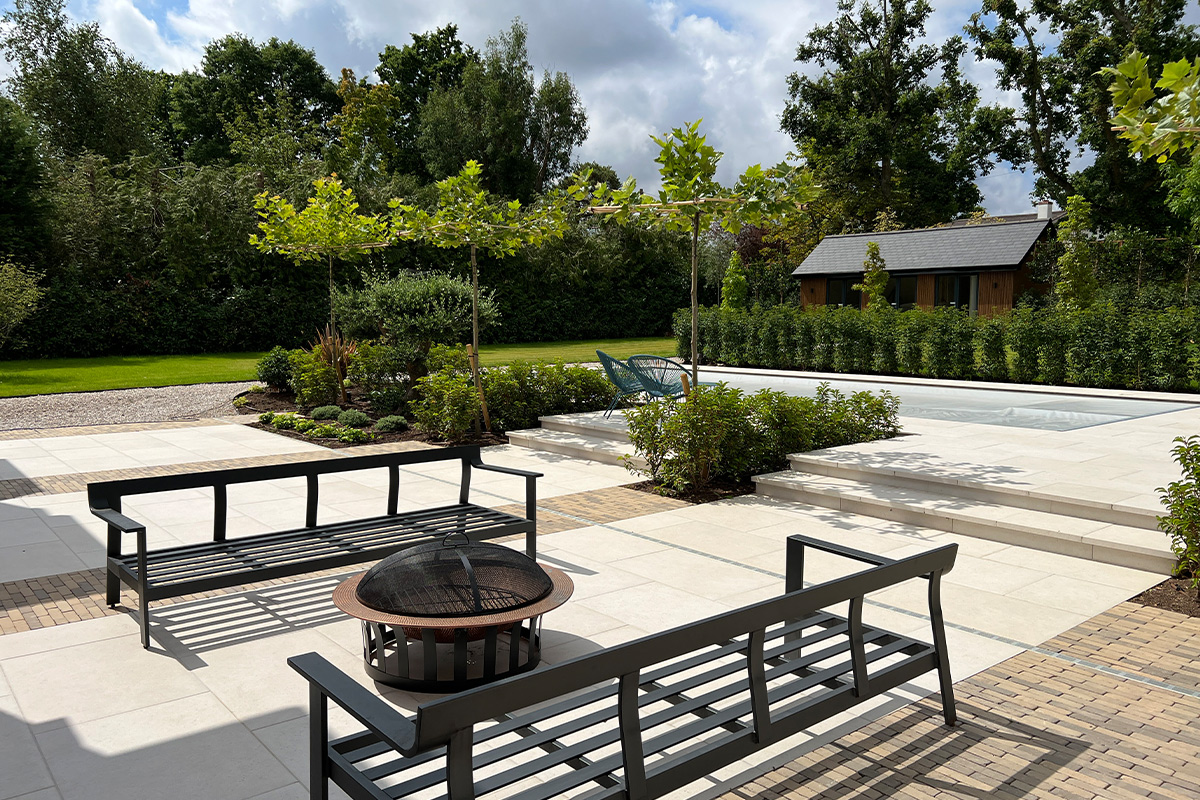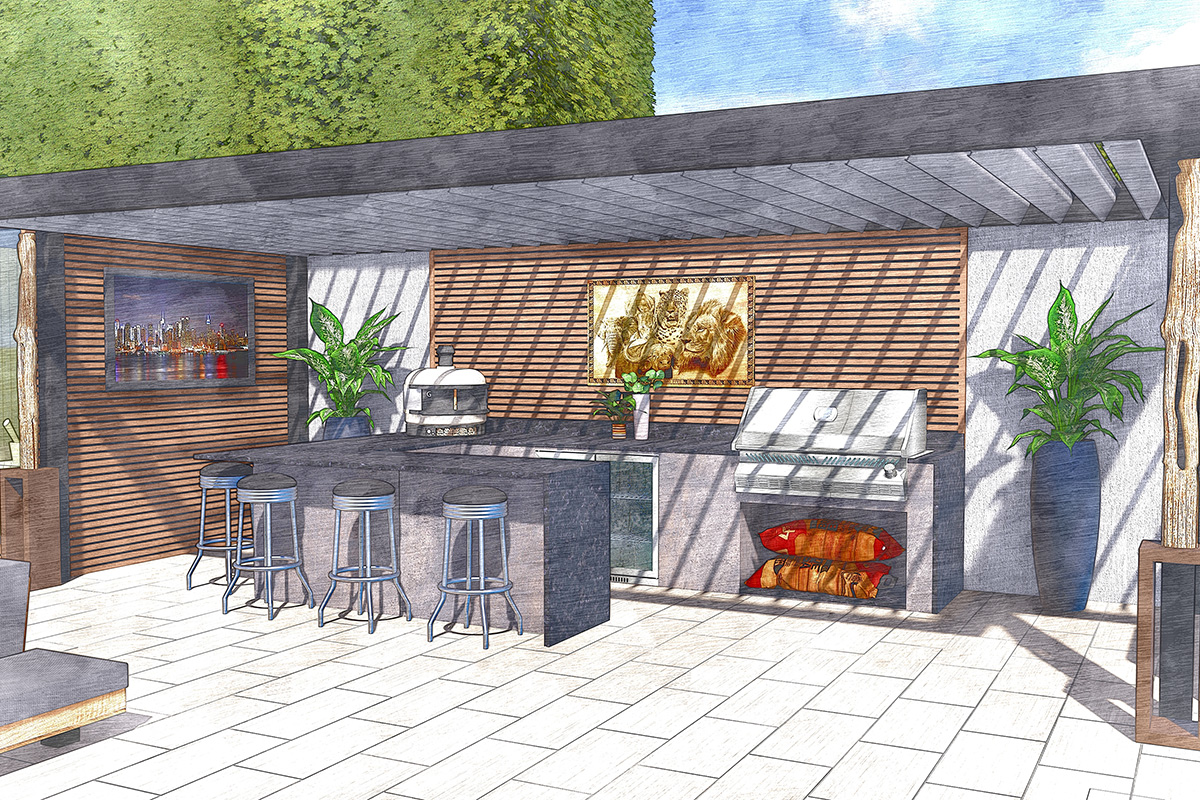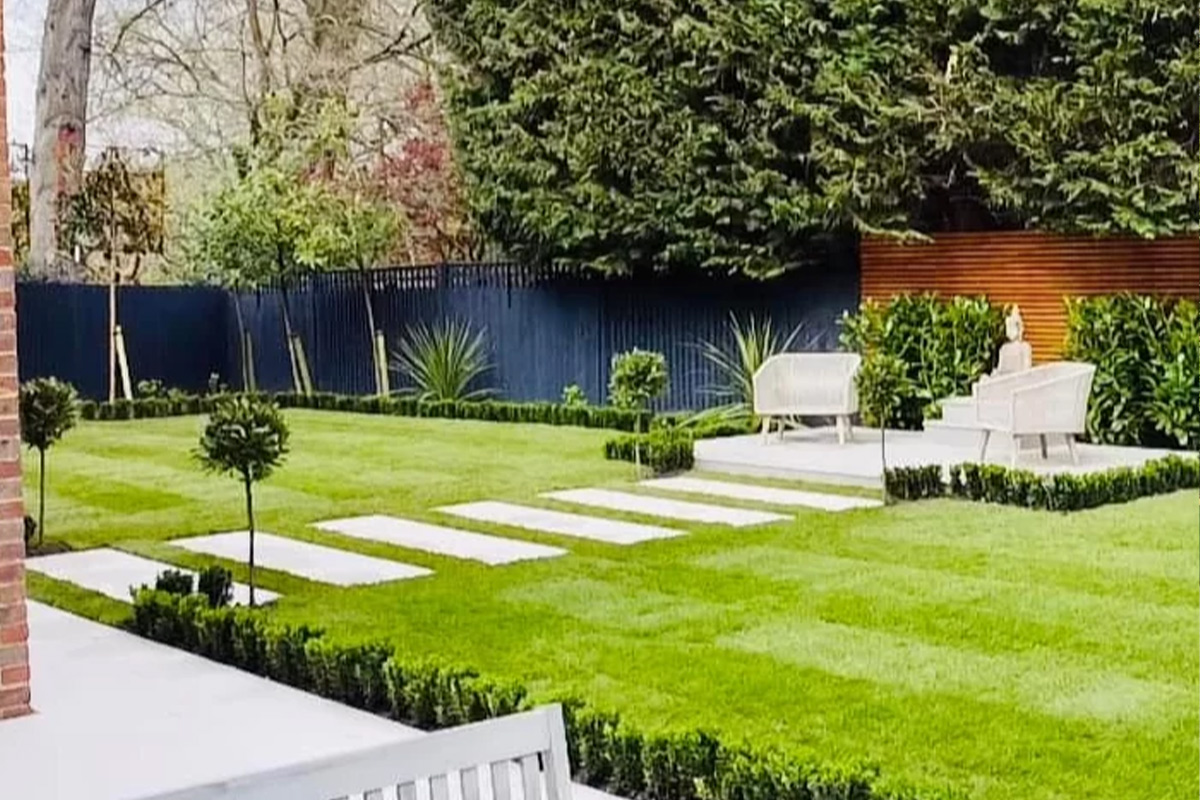Garden Designer
Why Every Home Needs a Professional Garden Designer
Your outdoor space holds incredible potential. It can become an extension of your home, a sanctuary for relaxation, and a valuable investment in your property’s future. Yet many homeowners struggle to unlock this potential, unsure how to transform their ideas into reality.
The difference between a DIY garden project and professional garden design extends far beyond aesthetics. While weekend gardening can be rewarding, professional garden designers bring expertise that saves time, money, and ensures your outdoor space truly complements your lifestyle. A skilled garden designer begins by carefully evaluating the plot to understand its unique opportunities and constraints.
A skilled garden designer understands how to align your outdoor environment with your home’s architecture, your family’s needs, and your property’s unique characteristics. They navigate challenges like poor drainage, awkward slopes, or challenging soil conditions with creative solutions that enhance rather than compromise your vision. Working with a professional also gives you greater control over the final outcome, allowing you to customise layouts and features to suit your preferences.
Most importantly, professional garden design is an investment. A well-designed garden should reflect the owner’s personality, lifestyle, and needs. Well-designed gardens not only provide years of enjoyment but can increase property values by up to 20%. The expertise and planning that goes into professional design creates outdoor spaces that flourish for decades rather than requiring constant replanting and restructuring.

What a Garden Designer Actually Does
Garden designers are creative problem-solvers who blend artistic vision with horticultural expertise and practical planning skills. Their work begins long before the first plant goes into the ground, starting with understanding your unique requirements and your site’s specific conditions. The craft of garden design lies in skilfully interpreting client desires and transforming them into beautiful, functional outdoor spaces through careful planning and technical expertise.
It’s important to distinguish between a garden designer and a landscape designer. While a garden designer focuses on plant selection and the aesthetics of garden spaces, a landscape designer often works on broader outdoor environments and may have expertise in construction or land management.
The role encompasses initial concept development, where designers translate your ideas into workable garden designs. This creative process involves developing plans that reflect your style and needs. They conduct thorough site analysis, examining factors like soil composition, drainage patterns, sunlight exposure throughout the day, and existing features worth preserving or removing.
Plant selection represents one of their most valuable skills. Professional designers understand which plants thrive in specific conditions, how different species complement each other visually and functionally, and how to create year-round interest through strategic seasonal planning.
Beyond plants, garden designers coordinate materials, layouts, and structural elements. They plan pathways that flow naturally, position seating areas to capture the best views, and integrate features like water elements, lighting, or outdoor kitchens seamlessly into the overall design.
The spatial planning aspect cannot be overstated. Garden designers understand how to maximise functionality within available space, creating distinct zones for different activities while maintaining visual coherence throughout the garden. Attention to detail in every element ensures that the garden is both cohesive and highly functional.
Garden designers often collaborate with builders to implement hard landscaping and structural elements, ensuring that the vision and plans are realised with precision and quality craftsmanship.
The Compelling Benefits of Professional Garden Design
Hiring a garden designer delivers advantages that extend far beyond creating a prettier garden. The expertise they bring prevents costly mistakes and creates outdoor spaces that truly enhance your quality of life.
Maximising Space and Functionality
Professional designers excel at spatial optimisation. They identify opportunities you might overlook, such as creating intimate seating areas in corners that seemed unusable, or designing vertical gardens that add interest without consuming floor space. Small gardens particularly benefit from professional planning, as designers know techniques to create illusions of space and maximise every square metre. No matter the size or shape, a professional will make the most of every garden space, ensuring it is both functional and aesthetically pleasing.
Dramatically Improving Aesthetics and Kerb Appeal
The visual impact of professional design immediately elevates your property’s appearance. Designers use a thoughtful mix of plants, colours, and materials to create visually appealing gardens that feel cohesive and natural. They understand colour theory, seasonal planning, and how to create focal points that draw the eye and create interest throughout the year. The point of focusing on key features is to achieve maximum impact with well-chosen elements. The transformation often surprises homeowners with how dramatically improved kerb appeal changes their property’s entire character.
Increasing Property Value
Well-designed gardens represent one of the most cost-effective ways to increase property value. Estate agents consistently report that attractive outdoor spaces significantly influence buyer decisions and final sale prices. The return on investment for professional garden design often exceeds that of kitchen or bathroom renovations.
Avoiding Expensive Mistakes
Perhaps most importantly, professional designers prevent costly errors. They understand which plants will thrive in your specific conditions, preventing the expense and disappointment of replacing unsuitable choices. Their planning prevents layout mistakes that would require expensive restructuring later. Designers consider a myriad of factors, from soil and climate to existing features, to ensure the best possible outcome for your garden.
Professional designers also understand local regulations, ensuring features like drainage, boundaries, and planning permissions are properly addressed from the beginning.

The Professional Garden Design Process Explained
Understanding the design process helps homeowners appreciate the value professional designers provide and ensures smooth collaboration throughout your project.
Consultation and Briefing Phase
The process begins with detailed discussions about your vision, lifestyle requirements, and budget parameters. Experienced designers ask thoughtful questions that help clarify your priorities and identify potential challenges early. They explore how you intend to use the space, your maintenance preferences, and any specific features or plants you particularly want to include or avoid.
Comprehensive Site Survey and Analysis
Professional designers conduct thorough site assessments, examining soil conditions, drainage patterns, sun and shade areas at different times of day, existing vegetation, and structural considerations. During site visits, designers take note of important features, planting combinations, and materials, recording observations that will inform the design. This analysis reveals opportunities and constraints that influence the final design direction.
They also assess views from inside the house, neighbouring properties, and different vantage points within the garden to ensure the design works from every angle. Special attention is given to window views, considering how garden elements can enhance the visual connection between indoor and outdoor spaces.
Concept Development and Mood Boards
The creative phase transforms your requirements and site analysis into visual concepts. Many designers develop their ideas in a dedicated studio, where they refine concepts and plans. Designers typically present mood boards, sketch plans, and plant palettes that communicate the proposed style and atmosphere. This stage allows refinement of ideas before detailed planning begins.
Detailed Plans and Specifications
Once concepts are approved, designers create comprehensive plans including detailed drawings, plant schedules, material specifications, and implementation timelines. These documents serve as blueprints for the installation phase and ensure everyone involved understands exactly what will be created.
Professional plans also include maintenance guidelines and seasonal care instructions, ensuring your garden continues to thrive long after installation.
Implementation and Project Management
Many garden designers coordinate the implementation phase, working with landscapers, suppliers, and contractors to ensure the design vision is accurately realised. This project management ensures quality standards are maintained and timelines are met.
Choosing the Right Garden Designer for Your Project
Selecting the right garden designer significantly influences your project’s success and your satisfaction with the final result. Several key factors help identify designers who align with your requirements and expectations.
Professional Qualifications and Memberships
Look for designers with relevant qualifications and professional body memberships, such as the Society of Garden Designers. These credentials indicate formal training and commitment to professional standards. A strong foundation in horticulture is essential, as it ensures the designer has specialised knowledge in plant care, botany, and sustainable planting practices. Qualified designers stay current with best practices, new techniques, and industry developments.
Portfolio Review and Style Alignment
Examine potential designers’ portfolios carefully, looking for projects that resonate with your aesthetic preferences and are similar in scope to your requirements. Consider which garden styles you are most interested in and seek designers who excel in those areas. Pay attention to how they handle challenges similar to those in your garden, such as slopes, small spaces, or specific growing conditions.
Client Testimonials and References
Seek feedback from previous clients about their experience working with the designer. Ask about communication, adherence to timelines and budgets, problem-solving abilities, and long-term satisfaction with results. A designer’s passion for their work is often reflected in client testimonials and the quality of their completed projects. Reputable designers willingly provide references and are proud of their track record.
Local Knowledge and Expertise
Choose designers familiar with your local climate, soil conditions, and native plants. Local expertise ensures plant selections will thrive and reduces maintenance requirements. Designers working in your area also understand local suppliers, contractors, and any regional considerations that might influence the project.
Budget Transparency and Communication
Effective designers clearly explain their fee structure, project costs, and payment schedules upfront. They should be willing to work within your budget constraints and suggest alternatives if initial concepts exceed available funds.

Current Trends Shaping Contemporary Garden Design
Understanding current trends helps homeowners make informed decisions about incorporating contemporary elements while ensuring their garden remains timeless and personally meaningful.
Sustainable and Wildlife-Friendly Planting
Environmental consciousness increasingly influences garden design choices. Homeowners want gardens that support local wildlife, require minimal water, and use sustainable materials. Designers respond by incorporating native plants, creating wildlife habitats, and designing rain gardens that manage water naturally. Emphasising ecology in garden design is essential for supporting local wildlife and promoting healthy ecosystems that benefit pollinators and other beneficial insects.
Pollinator-friendly plants feature prominently, with designers creating beautiful spaces that support declining bee and butterfly populations while providing stunning displays throughout the growing season.
Outdoor Living Spaces and Kitchens
Gardens increasingly function as outdoor rooms, complete with cooking facilities, comfortable seating, and weather protection. Designers create seamless transitions between indoor and outdoor spaces, often extending flooring materials and colour schemes to blur boundaries.
Outdoor kitchens range from simple barbecue areas to sophisticated spaces with running water, refrigeration, and weather-resistant storage. These features transform gardens into entertainment venues perfect for family gatherings and social occasions.
Low-Maintenance and Drought-Resistant Schemes
Busy lifestyles drive demand for beautiful gardens that require minimal maintenance. Designers achieve this through careful plant selection, automated irrigation systems, and strategic use of hard landscaping that reduces ongoing maintenance requirements. The use of containers adds flexibility and visual interest to garden layouts, making it easy to rearrange or update plantings as needed.
Drought-resistant plants have evolved far beyond basic succulents, now including stunning perennials and shrubs that provide colour and texture while requiring minimal watering once established.
Contemporary Layouts with Clean Lines
Modern garden design embraces simplicity and geometric forms. Clean lines, repetitive planting schemes, and architectural plants create sophisticated spaces that complement contemporary architecture while remaining timeless enough to avoid appearing dated. The surprising impact of simple, well-executed design choices can dramatically elevate the overall look and feel of a garden.
These designs often feature fewer plant varieties used in bold groupings, creating stronger visual impact than traditional mixed borders.
Dramatically Improving Aesthetics and Kerb Appeal
Incorporating art and sculpture as focal points in contemporary garden design enhances aesthetic appeal and creates a cohesive visual experience. Artistic elements like sculptures or carefully chosen art pieces can serve as striking features that draw the eye and add personality to outdoor spaces.
Eco-Friendly and Recycled Materials
Sustainability extends beyond plant choices to encompass hard landscaping materials. Designers increasingly specify recycled materials, locally sourced stone, and sustainably harvested timber. These choices reduce environmental impact while often providing unique character that mass-produced materials cannot match.
Sustainable Gardening: Designing with the Environment in Mind
Sustainable gardening is at the heart of modern garden design, ensuring that your dream garden not only looks stunning but also supports the environment for years to come. Garden designers are increasingly incorporating eco-friendly features into their designs, such as rainwater harvesting systems that reduce water waste, solar-powered lighting to minimise energy consumption, and recycled materials for hard landscaping elements like paths and patios. By selecting native plants that thrive in local conditions, designers can create gardens that require less maintenance, fewer chemical inputs, and less watering—making them both beautiful and resource-efficient.
A thoughtful garden designer might, for example, use permeable pavers to allow rainwater to soak into the soil, install a green roof to provide habitat for wildlife, or set up a composting system to recycle garden waste into valuable nutrients for plants. These sustainable design choices not only conserve resources but also promote biodiversity, attracting birds, bees, and butterflies to your garden. By working with a designer who prioritises sustainability, you can create a garden that is as kind to the planet as it is inspiring to look at—proving that responsible gardening and breathtaking design go hand in hand.
The Impact of Garden Design on Mental Wellbeing
A well-designed garden is more than just a visual delight—it can be a sanctuary for mental wellbeing. Garden designers understand the profound effect that nature and thoughtfully crafted outdoor spaces have on our mood and overall health. Research consistently shows that spending time in gardens can lower stress levels, improve mood, and even help alleviate symptoms of anxiety and depression.
Garden designers can create tranquil retreats by incorporating features that soothe the senses, such as gentle water features, fragrant planting, and peaceful seating areas nestled among lush greenery. For example, a designer might use calming colour palettes, natural materials like stone and wood, and the soft sound of a bubbling fountain to foster a sense of relaxation. Sensory gardens, which engage touch, smell, and sight, are another popular way to promote mindfulness and connection with nature. By prioritising mental wellbeing in garden design, you can create a personal haven that nurtures both body and mind, turning your garden into a restorative escape from the stresses of daily life.
Community Engagement through Garden Design
Garden design has the power to bring people together, transforming outdoor spaces into vibrant hubs of community life. Garden designers play a key role in creating gardens and green spaces that encourage social interaction and foster a sense of belonging. Whether it’s a community garden with shared planting beds, a public park with inviting pathways, or a rooftop garden with communal seating, these spaces are designed to inspire connection and collaboration.
For example, a designer might create a community garden by incorporating raised beds for group planting, a central seating area for gatherings, and a shared tool shed to support collective gardening efforts. By engaging with local residents and reflecting their ideas and aspirations in the design, garden designers ensure that these spaces truly serve the needs of the community. The result is a garden that not only enhances the landscape but also strengthens social ties, encourages the sharing of gardening tips and ideas, and creates a welcoming environment for all.
Leveraging Garden Design Software for Creative Planning
The creative process of garden design has been revolutionised by the advent of garden design software, empowering both garden designers and homeowners to bring their ideas to life with precision and ease. These powerful tools allow designers to experiment with different layouts, planting plans, and features in a virtual environment, making it easier to visualise the finished garden before any work begins.
For instance, a designer might use software to create a detailed 3D model of a garden, enabling clients to explore various planting schemes, hard landscaping options, and colour palettes from every angle. This approach not only sparks creative ideas but also helps identify potential challenges and solutions early in the process. By leveraging garden design software, you can develop a comprehensive garden plan, make informed decisions, and avoid costly mistakes—ultimately saving time and money while achieving your dream garden.
Whether you’re starting from scratch or refining an existing space, design software is an invaluable tool for turning inspiration into reality.

Garden Maintenance: Ensuring Lasting Beauty
A beautiful garden is a living, evolving space that requires ongoing care to maintain its appeal and vitality. Garden designers understand that maintenance is essential for preserving the structure, health, and beauty of your outdoor space over time. They provide expert advice and practical tips tailored to your garden’s unique needs, from pruning and shaping plants to nurturing healthy soil and managing pests organically.
For example, a designer might recommend a seasonal pruning schedule to keep shrubs and trees in optimal shape, suggest mulching beds to retain moisture and suppress weeds, or advise on the best organic fertilisers to enrich the soil. By creating a customised maintenance plan, garden designers help ensure that your garden remains vibrant and inviting throughout the year.
Prioritising regular maintenance not only protects your investment but also allows you to enjoy your garden’s beauty and tranquillity for years to come, creating a lasting legacy for your home and family.
Our Approach to Garden Design
Our garden and landscape design begins with understanding that every client, property, and project is unique. We offer both garden and landscape design services, catering to a wide range of outdoor projects. Our approach ensures your garden reflects your personality while functioning beautifully for years to come.
Tailored Design Philosophy
Every project starts with comprehensive consultation to understand your needs, preferences, and budget constraints. We believe successful gardens result from collaboration between designer and client, ensuring the final result exceeds expectations while remaining true to your vision.
Our designers take time to understand how you live, entertain, and use outdoor spaces. This insight influences every design decision, from pathway placement to plant selection.
Expert Planning and Visualisation
From initial sketches through detailed CAD plans and 3D visualisations, we ensure you can envision your new garden before implementation begins. Our planning process identifies potential challenges early and develops creative solutions that enhance rather than compromise the design.
Advanced visualisation tools help clients understand how their garden will look in different seasons and as plants mature, ensuring long-term satisfaction with design choices.
Horticultural Knowledge and Plant Expertise
Our designers possess deep understanding of plants, soil conditions, and growing requirements. We select plants suited to your specific site conditions, maintenance preferences, and aesthetic goals. This expertise ensures your garden thrives while providing year-round beauty.
Plant selection goes beyond basic suitability to consider factors like seasonal interest, wildlife value, and how different species interact over time.
Sustainable Design Priorities
Environmental responsibility guides our material choices, plant selections, and design strategies. We prioritise eco-friendly materials, water-wise planting schemes, and designs that support local wildlife while creating beautiful, functional spaces.
Sustainable practices often reduce long-term maintenance requirements while creating healthier garden ecosystems that naturally resist pests and diseases.
Comprehensive Project Management
We manage your garden transformation from initial concept through final implementation, coordinating with landscapers, suppliers, and contractors to ensure quality standards are maintained throughout the project. Effective marketing and clear client communication are essential to running a successful garden design business, helping us build strong relationships and maintain a professional presence in the industry.
This end-to-end service eliminates the stress of coordinating multiple contractors while ensuring design integrity is preserved during implementation.
Understanding Garden Design Investment and Budgeting
Garden design represents a significant investment, and understanding cost factors helps homeowners make informed decisions about their projects.
Factors Influencing Project Costs
Several variables affect garden design costs, starting with project size and complexity. Larger gardens naturally require more plants, materials, and labour, while complex features like water elements, lighting systems, or significant earthworks increase costs substantially.
Material choices significantly impact budgets. Natural stone costs more than concrete alternatives, but provides superior longevity and aesthetic appeal. Similarly, mature plants create immediate impact but cost considerably more than smaller specimens that require time to reach full size.
Site conditions also influence costs. Difficult access, steep slopes, or poor drainage may require special equipment or additional preparation work that affects the overall budget.
Design Investment Versus Long-Term Value
Quality garden design often prevents expensive mistakes that plague DIY projects. Poor plant choices, inadequate drainage, or impractical layouts frequently require costly corrections that exceed the original cost of professional design.
Professional designers also understand which investments provide the best return. They might recommend spending more on key structural elements while suggesting economical alternatives for features that can be upgraded later.
Well-designed gardens typically require less maintenance over time, reducing ongoing costs while providing greater enjoyment and property value enhancement.
Inspiration Through Transformation: Before and After Success Stories
Garden transformations demonstrate the remarkable potential that professional design unlocks in outdoor spaces. These projects showcase how thoughtful planning and expert implementation create stunning results that enhance both property value and quality of life.
Challenging sites often produce the most dramatic transformations. Steep slopes become terraced gardens with multiple levels of interest. Awkward corners transform into intimate seating areas surrounded by carefully selected plants that thrive in those specific conditions.
Small gardens particularly benefit from professional design, as experienced designers know techniques to create illusions of space and maximise functionality within limited areas. Vertical gardens, mirrors, and strategic plant placement can make tiny gardens feel spacious and inviting.
Mature gardens benefit from professional redesign when they no longer meet homeowners’ needs. Overgrown plantings can be selectively thinned and restructured, breathing new life into tired spaces while preserving valuable mature specimens.
The most successful transformations balance immediate impact with long-term planning, creating gardens that provide satisfaction from the day of completion while continuing to evolve and improve as plants establish and mature.

Transform Your Outdoor Space with Expert Garden Design
Your garden represents an opportunity to create something truly special—a space that reflects your personality, meets your practical needs, and provides years of enjoyment while enhancing your property’s value.
Professional garden design transforms this opportunity into reality through expertise, creativity, and careful planning that ensures your investment delivers maximum returns. The process begins with a conversation about your vision and requirements, followed by careful analysis of your site’s unique characteristics and potential.
At Urban Landscapes, we’re passionate about creating gardens that exceed expectations while remaining true to each client’s individual style and requirements. Our approach combines creative design with practical expertise, ensuring your garden functions beautifully for years to come.
Ready to discover your garden’s potential?
Contact our team today to arrange a consultation. Let us show you how professional garden design can transform your outdoor space into the garden of your dreams.
Visit our portfolio to see examples of our recent transformations and take the first step towards creating your perfect outdoor sanctuary.
